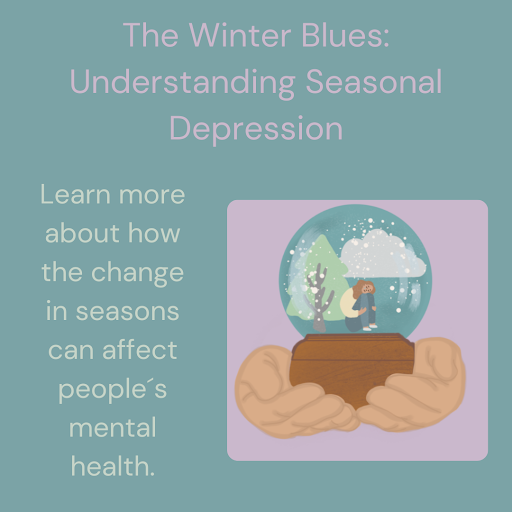FRISCO, TEXAS — It’s no secret that the state of the journalism industry as we know it is evolving drastically. Traditional media outlets are facing declining viewership numbers and newspapers are going out of business as funding is reduced to mere pennies or gone completely. If there’s still readership left, the majority of it has gone digital.
According to an article published by the University of North Carolina’s Center for Innovation and Sustainability in Local Media (CISLM), the advent of the internet threatened the 20th- century revenue system newspapers in Europe and the U.S. were accustomed to, with the reliance on advertisers for funding. That presents a challenge to allowing physical newspapers to stay afloat. By the time the 90s rolled around, the domino effect had already started, and newspapers across the country began to shut down one after another.
The 2008 recession further exacerbated funding problems newspapers were already facing. Even less revenue flowed into their pockets as advertisers ceased advertising on papers as wallets tightened, and bankruptcy loomed on the doorstep of many newspapers. The solution to this crisis was conglomerates. One by one newspapers across different cities were bought up and consolidated under new names, with the CISLM article mentioning names like “New Media” and “Digital Gate” as some of the names newly consolidated media companies were rebranded to.
While funding is a major issue behind the collapse of traditional newspapers, that’s not the full picture.
Newspapers have also faced challenges through the years with the introduction of the radio and subsequent creation of radio stations, the introduction of televisions, and the birth of the internet leading to a decline in readership throughout the years. Radio and television presented a challenge to newspapers, creating new mediums through which news could be consumed and forcing newspapers to adapt by creating radio stations and TV channels to keep up with changes in the consumption of media. Most recently, the journalism industry has adapted to the consumption of media through devices such as smartphones, tablets, and computers.
The changing role of how media is disseminated plays a critical role in how the media is consumed. With the days of flipping through newspapers gone, the task of reading the news has largely gone digital with a Pew Research Center study finding that 86% of Americans obtain their news from online sources.
Of those surveyed, people under the age of 50 were more likely to use digital devices for obtaining their news, with 71% of young adults often obtaining their news from digital devices.
Another Pew Research Center study further supports the trends we’re seeing in a move towards digital. They found that among U.S. adults surveyed from 2020 to 2024, the use of digital devices as a platform for obtaining news increased from 52% to 58%, while television decreased from 35% to 32%, radio decreased from 7% to 6%, and newspapers decreased from 5% to 4%.
People’s tastes for how they consume media have changed drastically throughout the years, especially among millennials and Gen Z, who largely consume news through social media apps like X (formerly known as Twitter), TikTok, and Instagram.
A study published by the American Press Institute highlighted the diversity of sources some millennials and Gen Z use to obtain their news, with many still using traditional media outlets to stay informed, however, this trend has largely been towards using social media to stay informed.
Out of 5,975 pollers, ranging from ages 16 to 40, Gen Z had the highest consumption of news through social media followed by a tie between younger millennials and the overall polling pool.
We see this lack of interest in traditional media with the rise of so-called “news influencers,” citizen journalists that take to social media to report on a wide range of issues with creators like Gen or Peter Santenello posting on platforms like Youtube.
The lack of trust in traditional media outlets is another contributing factor to decreasing viewership with a Pew Research Center poll finding 18 to 29-year-olds have the highest trust in social media for obtaining news, with 44% trusting social media in 2016 to 52% in 2024.
More evidence shows that people are drawn toward citizen journalism, sometimes more so than traditional media. Another article published by the Pew Research Center in 2024 found that one in five Americans regularly get their news from social media influencers.
Knowing all of this, how do we begin to solve the issues plaguing the journalism industry?
For starters, attention needs to be drawn towards local journalism and supporting the work they do.
William McKenzie, a Pulitzer Prize-winning journalist, Dallas Morning News Contributing Columnist, George W. Bush Institute senior editorial advisor, and SMU adjunct lecturer, shared some insight on the emergence of what he coins as “news deserts.”
“In terms of local journalism data, obviously we’re seeing what are called news deserts of communities that lack a newspaper that previously had one. Most of those are rural communities, some are suburban. It’s not necessarily the big metro areas, although some have…have lost and you will see papers that have shrunk, including my own, the Dallas Morning News, it shrunk from what it once was, but it’s still there. And I don’t think it’s going away tomorrow or anything,” he said.
According to McKenzie, the potential solution to news deserts is through either one of two profit models. The non-profit model and the for-profit model.
“One [model] is the nonprofit [model], and [the] Texas Tribune is a good example. And there are many other examples like that. There are organizations like [the] American Journalism Project that [are]… investing seed money in some of these [organizations],” he said.
This model of funding relies heavily on funding from donations and foundations. The other model McKenzie mentioned is implementing the for-profit model.
“I got a note the other day from a husband and wife who bought six newspapers in Iowa. They read what we’d written about local journalism and they wanted to talk about it. So we had a 40 minute [to 45] minute conversation [about] their day, about what they’re doing to make it happen in their part of Iowa, in Eastern Iowa, Northeastern Iowa, where they own, I think, six newspapers. And it’s a struggle, but they’re making do with the for-profit model,” he said.
For-profit funding relies heavily on advertising to generate revenue, creating an unsustainable situation for newspapers in the long run if they fail to secure enough advertisers.
“And so the [Dallas] Morning News doesn’t have any debt, [but] it does face having enough advertisers and circulation. That’s a constant struggle, finding new markets,” he said.
A Los Angeles Times article gave some pointers about what the federal government could do to help newspapers stay afloat. Such action could look like passing legislation that allows courts to consider the community benefits of restructuring bankrupted newspapers, providing no or low interest rates for community publications or newspaper startups, and making the process of converting into a non-profit easier.
There is no exact solution that will work for all newspapers. Exploring funding models, diversifying mediums through which their content is distributed, and keeping up with changes in demographics could help newspapers stay relevant.
The answer to the changing media landscape is to adapt. Newsrooms and media corporations need to hop on the bandwagon of short-form videos, following the editing and pace of those types of videos. Diversifying the type of content made is a great idea as well. Podcasting has gotten incredibly popular in recent years, and it’s already being embraced by many news outlets across the country. Creating apps to make the process of reading the news easier and more accessible is another option.
There’s a lot the traditional journalism community can learn, especially when it comes to embracing new mediums for the dissemination of media and information, and the bottom line is that learning is needed now more than ever.








